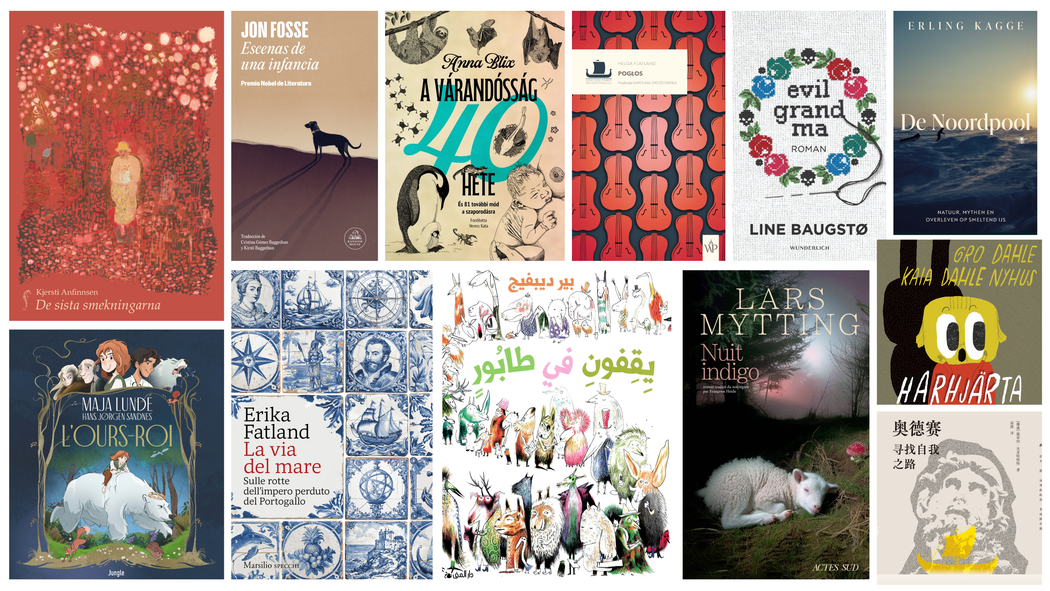Why I translate Fosse: Cristina Gómez Baggethun
When Cristina Gómez Baggethun translates Jon Fosse into Spanish, she’s forced out of her comfort zone and has to experiment. Read about her kinship with his books and her search for the Fosse rhythm in the Spanish language.

How did you become interested in the Norwegian language?
My mother is Norwegian, so I’ve been speaking both Norwegian and Spanish my whole life. I spent most of my childhood in Spain, but I was often in Norway, and when I was four we lived here for an extended period. That made me forget my Spanish, so I actually had to relearn the language when we moved back to Spain. Both languages have shaped me, but I have always been most interested in Norwegian literature.
Where were you when you found out that Jon Fosse was awarded the Nobel Prize in Literature 2023?
I was at our cabin in Valdres (in the heart of southern Norway) during the autumn school holiday when I suddenly got a message from a journalist in one of Spain’s top newspapers. She wanted to interview me about Fosse. I had to hurry online, I’d not yet heard about the award, and spent the next few days being interviewed. Not too many people knew about Fosse in the Spanish-speaking world, so the inquiries came flooding in from newspapers, TV and radio. It was great to be able to convey my enthusiasm.
How was your first encounter with Fosse’s writing?
My first translation of Fosse was the play I Am the Wind, in 2013. At that point I had already translated quite a few plays, many of them by Ibsen, but this was something else entirely. It was all about flow and punctuation! Or rather about the lack of it. Still, it was probably when I translated Trilogy a bit later that I really got into Fosse.
Why do you translate Fosse?
Because I become genuinely engaged in his writing. It touches me so deeply, as though it’s a kind of landscape in which I recognize myself and feel at home. But as a translator, it is Fosse’s experimentation with form that I find particularly exciting. Because then I too need to experiment, all the time, and it’s so much fun when I feel that I have got it right. And it never becomes boring, because Fosse is constantly developing. Whenever I think I’ve got the hang of it, and start a new book, I then realize that I can’t do exactly the same thing. There is always something new for me to explore.
What’s the greatest challenge when translating Fosse?
What’s difficult, and therefore exciting, is achieving musicality in the language. I think the novels are primarily about rhythm, which means I have to work unusually fast, to avoid losing it. The poetry is totally different, because then the musicality is affected by the timbre. So I then work unusually slowly.
I also find it hard to decide which register to stick to. As a Fosse translator, you have to make a choice: Either you choose an abstract and minimalist language like Nynorsk, or you go for a more down-to-earth approach that reflects the dialects that Nynorsk is based upon. Fosse himself has become more and more archaizing and intent on using words that are in danger of going extinct. I like to take up the baton and do similarly. At the same time, it needs to sound as simple. I find that combination fascinating. The poetics of simplicity.
Do you have a Fosse favorite?
No, I don’t think so. I grow fond of the texts as I translate them, so to speak. I have a soft spot for Trilogy, because it was the first novel I worked on, but then came my beloved Septology. And when I worked with Fosse’s poetry, I felt that I had reached the source. Actually, I think Fosse’s production is very organic: You might suddenly recognize a play in one of his novels, and many of his poems appear in both his novels and plays. It’s all connected, which makes it hard to single out one thing.
What’s your fondest memory as a translator?
I am always very happy if I feel that the translation is really flowing. If I can read through the script without stumbling even once, a sense of calm will descend on me. Naturally, it’s also exciting to watch theater productions that are using your translation, I have experienced this with both Ibsen and Fosse. But it’s also quite scary, because if you’ve made the slightest mistake it becomes very obvious. It was also quite special to be Fosse’s sponsor when in September he received an honorary doctorate at the Spanish university Menéndez Pelayo. When I stood there holding a laudatory speech for him in true medieval style and wearing full academic regalia, many things fell into place, it was such a true joy to convey. But my very best memory is probably the year and a half I spent translating Fosse’s collected poems. It was my first experience of translating poetry, and I sincerely hope it won’t be my last. Then I think it was mainly about finding calm, about getting into a mood, because it was only from there that I was able to re-create. I then liked to start the day by reading Spanish poetry for an hour or two, and after that I could get started and dive into Fosse’s poems. I doubt that I would have managed it without the grant I received from the The Norwegian Association of Literary Translators.
What question should we have asked you?
You tell me…
Read more
More about Cristina on Books from Norway
Cristina was our Translator of the Month back in 2018. Read more
In 2009, she won NORLA’s Translator’s Award.
See all the interviews in the series here
Read more about Jon Fosse here


